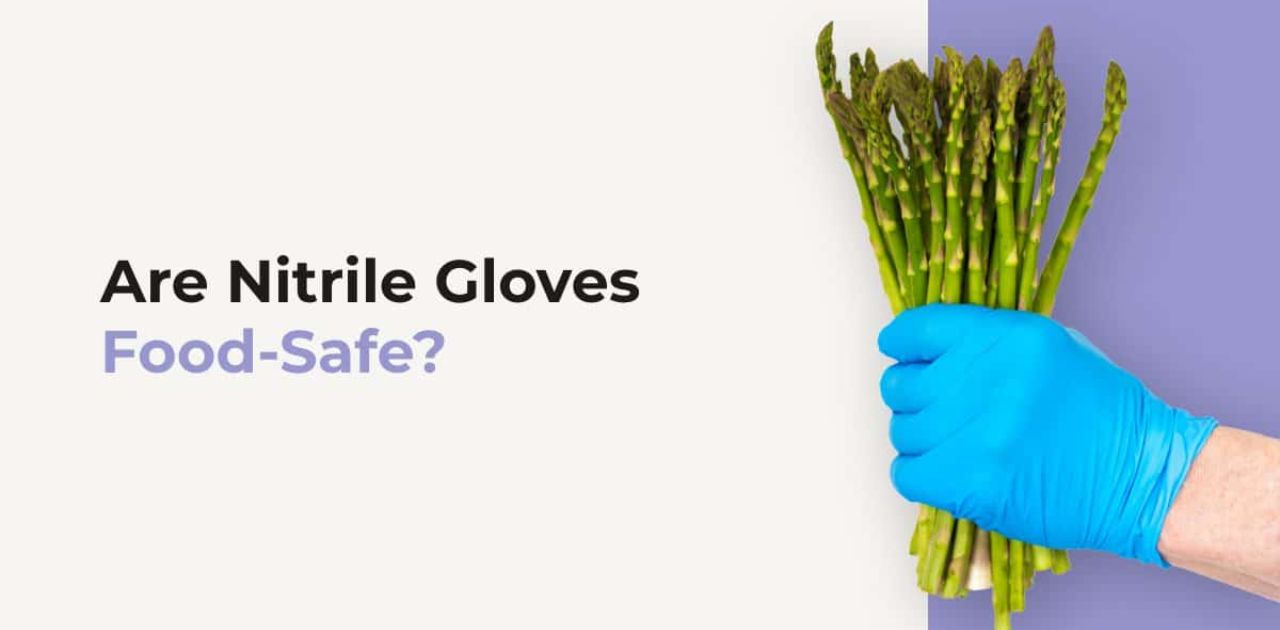Nitrile gloves have emerged as indispensable tools in various industries, offering a balance of durability, flexibility, and chemical resistance. In the realm of food handling, where hygiene and safety are paramount, the choice of gloves is of utmost importance. This exploration delves into the safety and suitability of nitrile gloves for food handling applications.
By examining their composition, comparing them to other materials like latex, and scrutinizing factors such as chemical resistance and barrier properties, we aim to provide a comprehensive understanding of their role in ensuring food safety. Additionally, we will discuss regulatory standards, manufacturing processes, and research findings to offer insights into best practices for selecting and utilizing nitrile gloves in diverse food handling environments.
As stakeholders in the food industry navigate the complex landscape of safety standards and consumer expectations, this examination serves as a guide to facilitate informed decision-making and promote the highest standards of food hygiene and protection.
Introduction to Nitrile Gloves
Nitrile gloves have become ubiquitous in various industries due to their versatility and durability. In this section, we delve into the composition of nitrile gloves and their suitability for use in food handling environments.
Understanding the Composition
Nitrile gloves are made from a synthetic rubber compound called nitrile butadiene rubber (NBR). This material offers several advantages over traditional latex gloves, including superior resistance to punctures, chemicals, and oils. Understanding the composition of nitrile gloves is crucial to assessing their safety for food handling applications.
Importance of Food Safety Standards
Maintaining high food safety standards is paramount in the food industry to prevent contamination and ensure consumer health. In this section, we explore the regulatory requirements for food handling equipment and the role of nitrile gloves in adhering to these standards.
Regulatory Requirements for Food Handling Equipment
Government agencies and regulatory bodies impose strict standards on food handling equipment to safeguard public health. Compliance with these regulations is essential to minimize the risk of foodborne illnesses and ensure the safety of consumers.
Nitrile Gloves vs. Latex Gloves: A Safety Comparison
The choice between nitrile and latex gloves is critical, especially in environments where food is handled. This section compares the safety aspects of nitrile gloves with those of latex gloves, focusing on allergen concerns and sensitivity issues.
Allergen Concerns and Sensitivity Issues
Latex allergies are a significant concern in many industries, including food handling. Nitrile gloves offer a viable alternative for individuals with latex sensitivities, reducing the risk of allergic reactions and ensuring a safer working environment.
Chemical Resistance of Nitrile Gloves
Nitrile gloves are prized for their exceptional chemical resistance, making them ideal for handling various substances. However, it is essential to evaluate their suitability for contact with food and assess the potential risks of chemical contamination.
Evaluation of Potential Contaminants in Food Contact
Chemicals present in nitrile gloves can leach into food during handling, posing a potential health risk to consumers. Understanding the chemical properties of nitrile gloves and their interaction with food is crucial for mitigating contamination risks.
Permeability and Barrier Properties

The permeability and barrier properties of nitrile gloves play a significant role in preventing cross-contamination and ensuring food safety. This section examines how these properties influence the risk of microbial transmission and the spread of pathogens.
Assessing the Risk of Cross-Contamination
Effective barrier protection is essential for minimizing the transfer of harmful microorganisms between food handlers and food products. Evaluating the permeability of nitrile gloves is critical to assessing their effectiveness in preventing cross-contamination in food handling settings.
Nitrile Gloves: Manufacturing Processes and Quality Assurance
The manufacturing processes and quality assurance measures employed in the production of nitrile gloves directly impact their safety and performance. This section explores the factors influencing glove integrity and the measures taken to ensure consistent quality.
Factors Influencing Glove Integrity
Various factors, such as raw material selection, manufacturing techniques, and quality control procedures, can affect the integrity of nitrile gloves. Understanding these factors is essential for identifying potential risks and ensuring the reliability of glove products.
Research Findings on Nitrile Gloves in Food Handling
Numerous studies have investigated the safety and efficacy of nitrile gloves in food handling environments. In this section, we review the research findings and examine the implications for food safety practices.
Studies on Migration of Chemicals and Substances
Research studies have evaluated the potential migration of chemicals and substances from nitrile gloves to food items during handling. Analyzing the findings of these studies can provide valuable insights into the safety of nitrile gloves for food contact applications.
Best Practices for Choosing Food-Safe Nitrile Gloves
Selecting the right nitrile gloves is essential for maintaining food safety standards and protecting consumer health. This section offers guidance on choosing food-safe nitrile gloves and provides recommendations for different food handling applications.
Considerations for Different Food Handling Applications
Different food handling tasks require specific glove characteristics to ensure optimal performance and safety. Considering factors such as glove thickness, texture, and compliance with food safety regulations is essential when selecting nitrile gloves for various food handling applications.
Conclusion
In conclusion, the examination of nitrile gloves for food handling reveals both their strengths and considerations for optimal use. While nitrile gloves offer significant advantages in terms of durability, chemical resistance, and allergen safety compared to latex gloves, it is essential to acknowledge the potential risks associated with chemical migration and cross-contamination.
By adhering to rigorous regulatory standards, implementing best practices for glove selection and usage, and staying informed about the latest research findings, food industry professionals can mitigate these risks and ensure the safety of their products and consumers.
Ultimately, the adoption of food-safe nitrile gloves underscores a commitment to upholding the highest standards of food hygiene and protection, contributing to the overall integrity and trustworthiness of the food supply chain. As technologies and practices continue to evolve, ongoing vigilance and collaboration within the industry will be crucial in advancing food safety initiatives and safeguarding public health.
Read Also: How Long Do Food Colorings Last? Exploring Their Shelf Life and Expiry Dates

